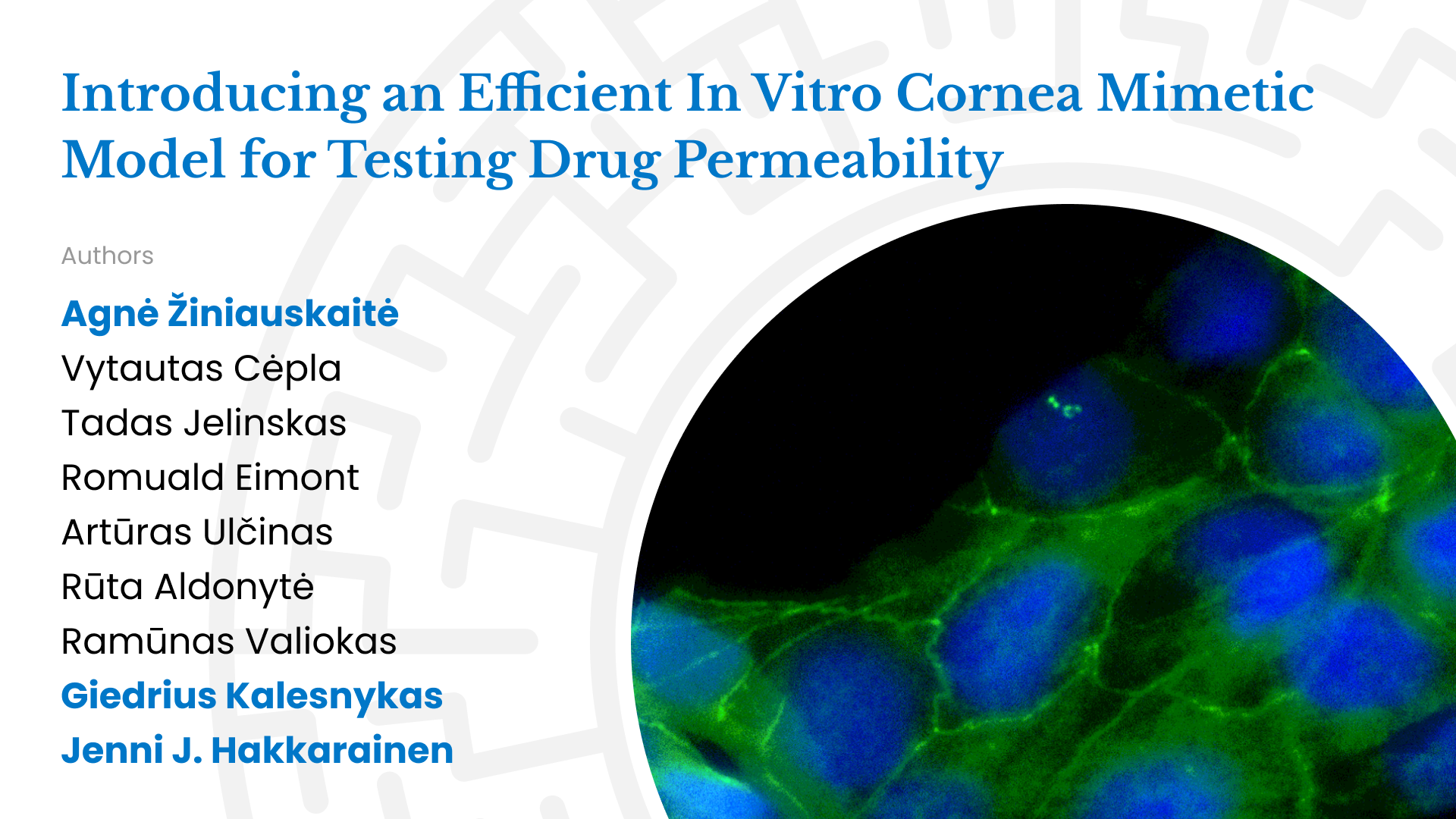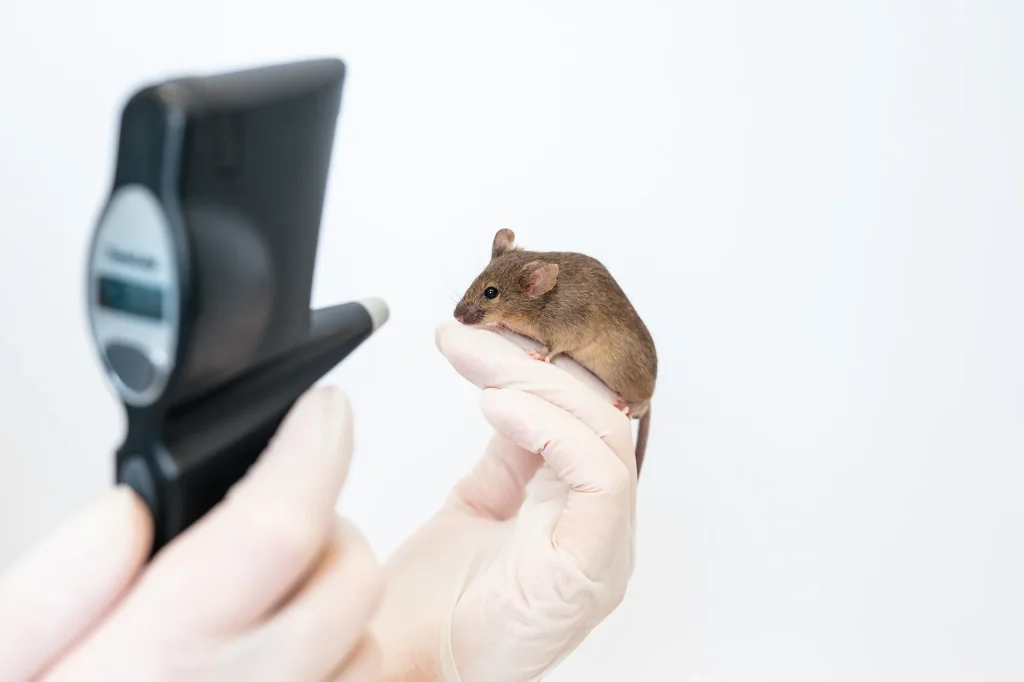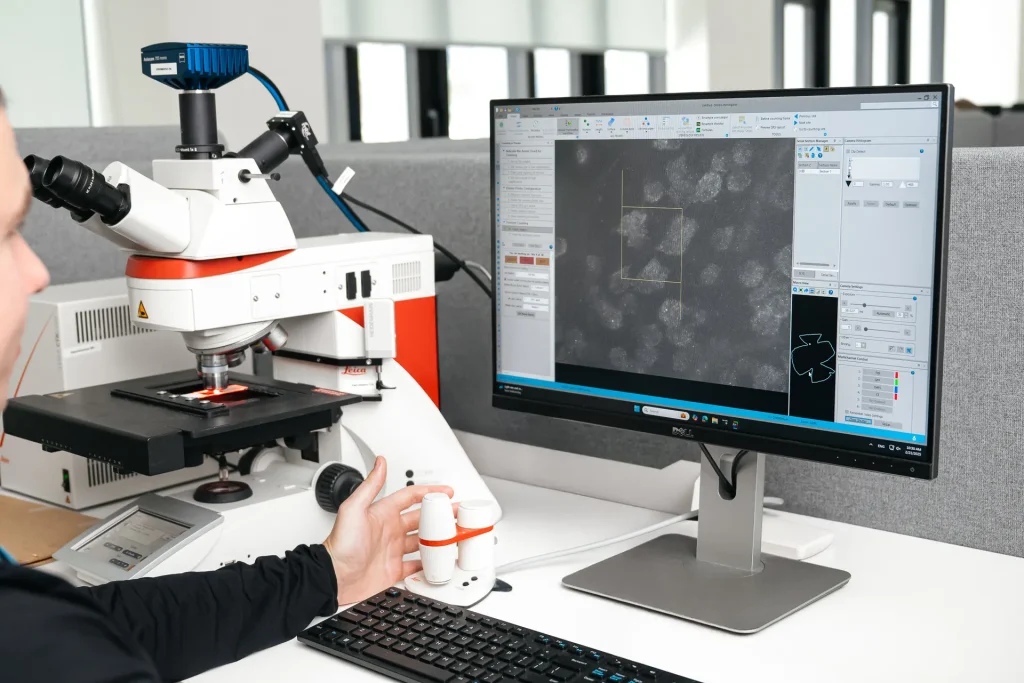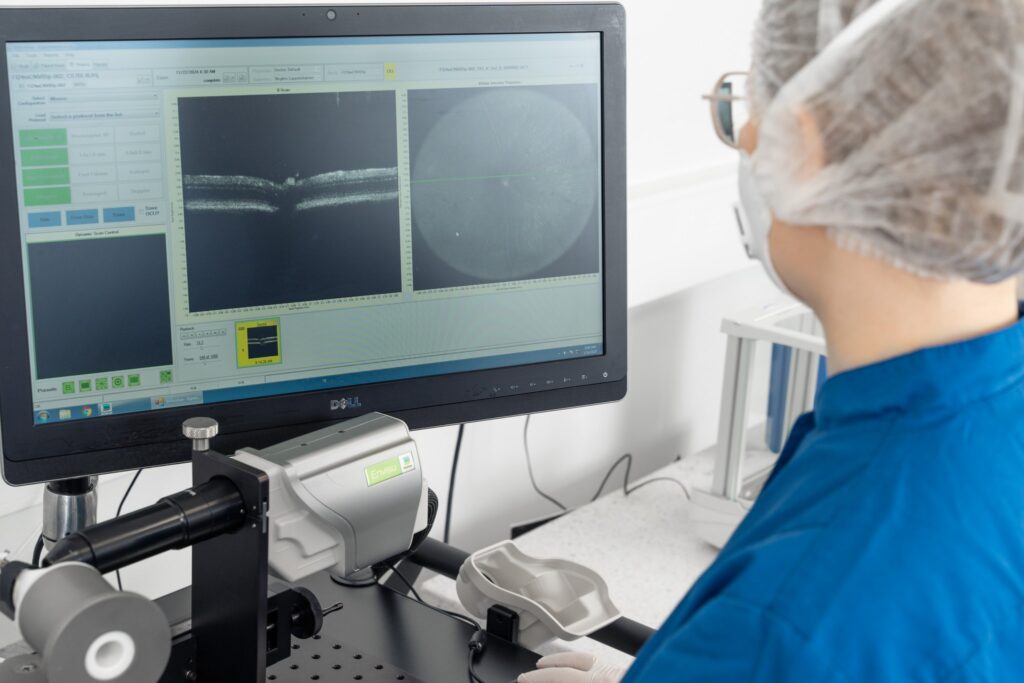An Efficient In Vitro Cornea Mimetic Model of Testing Drug Permeability


Experimentica’s R&D team in collaboration with the State Research Institute Center for Innovative Medicine (Vilnius, Lithuania), Ferentis UAB, and the Center for Physical Sciences and Technology, Department of Nanoengineering (Vilnius, Lithuania) today published about a new in vitro cornea mimetic model for testing drug permeability.
There is a growing need for novel in vitro corneal models to replace animal-based ex vivo tests in drug permeability studies.
In this study, we demonstrated a corneal mimetic that models the stromal and epithelial compartments of the human cornea. Human corneal epithelial cells (HCE-T) were grown on top of a self-supporting porcine collagen-based hydrogel. Cross-sections of the multi-layers were characterized by histological staining and immunocytochemistry of zonula occludens-1 protein (ZO-1) and occludin. Furthermore, water content and basic elastic properties of the synthetized collagen type I-based hydrogels were measured. The apparent permeability coefficient (Papp) values of a representative set of ophthalmic drugs were measured and correlated to rabbit cornea Papp values found in the literature. A multilayered structure of HCE-T cells and the expression of ZO-1 and occludin in the full thickness of the multilayer were observed. The hydrogel-based corneal model exhibited an excellent correlation to rabbit corneal permeability (r = 0.96), whereas the insert-grown HCE-T multilayer was more permeable and the correlation to the rabbit corneal permeability was lower (r = 0.89).
The hydrogel-based human corneal model predicts the rabbit corneal permeability more reliably in comparison to HCE-T cells grown in inserts. This in vitro human corneal model can be successfully employed for drug permeability tests whilst avoiding ethical issues and reducing costs.
Keywords: in vitro corneal model; collagen hydrogel; permeability
Check out our latest news and activities
All Scientific publications




Copyright: Experimentica Ltd. 2025